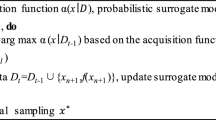Abstract
Using neural network to predict limiting dome height (LDH) based on the result of finite element analysis is a high efficiency work in spite of little error. Finite element results are presented with different working condition parameters, such as material thickness, punch speed, friction coefficient between punch, die and sheet metal, and blank holder force. Then, a two-layer back propagation network is developed to best fit this discrete engineering problem. Different number of neurons in the hidden layer, three commonly used training algorithms, and two performance functions are adopted and compared to choose the suitable one to minimize the error between the predictive value and the simulation results (one with ideal output). After comparison, the neuron number in the hidden layer is determined to be 12 and the appropriate learning algorithm is Levenberg–Marquardt algorithm. The difference between two performance algorithms is small. The mean square error between the predicted value and targeted one is less than 0.2%. Finally, five sheet metal forming processes under various working conditions are predicted and compared with the finite element method (FEM) result to verify the validity of this neural network model. The small difference indicates that this neural network can predict the LDH in a certain range of working conditions.
Similar content being viewed by others
References
Cheng PJ, Lin SC (2000) Using neural networks to predict bending angle of sheet metal formed by laser. Int J Mach Tool Manuf 40:1185–1197
Lin JC (2003) Using FEM and neural network prediction on hydrodynamic deep drawing of T-piece maximum length. Finite Elem Anal Des 39:445–456
Wang J, Wu X, Thomson PF, Filtam A (2000) A neural networks approach to investigating the geometrical influence on wrinkling in sheet metal forming. J Mater Process Technol 105:215–220
Manabe K, Yang M, Yoshihara S (1998) Artificial intelligence identification of process parameters and adaptive control system for deep drawing process. J Mater Process Technol 80–81:421–426
Cheok BT, Nee AYC (1998) Trends and developments in the automation of design and manufacture of tools for metal stampings. J Mater Process Technol 75:240–252
Maa C-Y (1993) Neural networks for nonlinear programming. University Microfilms International, Ann Arbor, MI
Gelenbe E (1991) Neural networks advances and applications. North-Holland, New York
Author information
Authors and Affiliations
Corresponding author
Rights and permissions
About this article
Cite this article
Wang, L., Lee, T. Prediction of limiting dome height using neural network and finite element method. Int J Adv Manuf Technol 27, 1082–1088 (2006). https://doi.org/10.1007/s00170-004-2322-1
Received:
Accepted:
Published:
Issue Date:
DOI: https://doi.org/10.1007/s00170-004-2322-1




